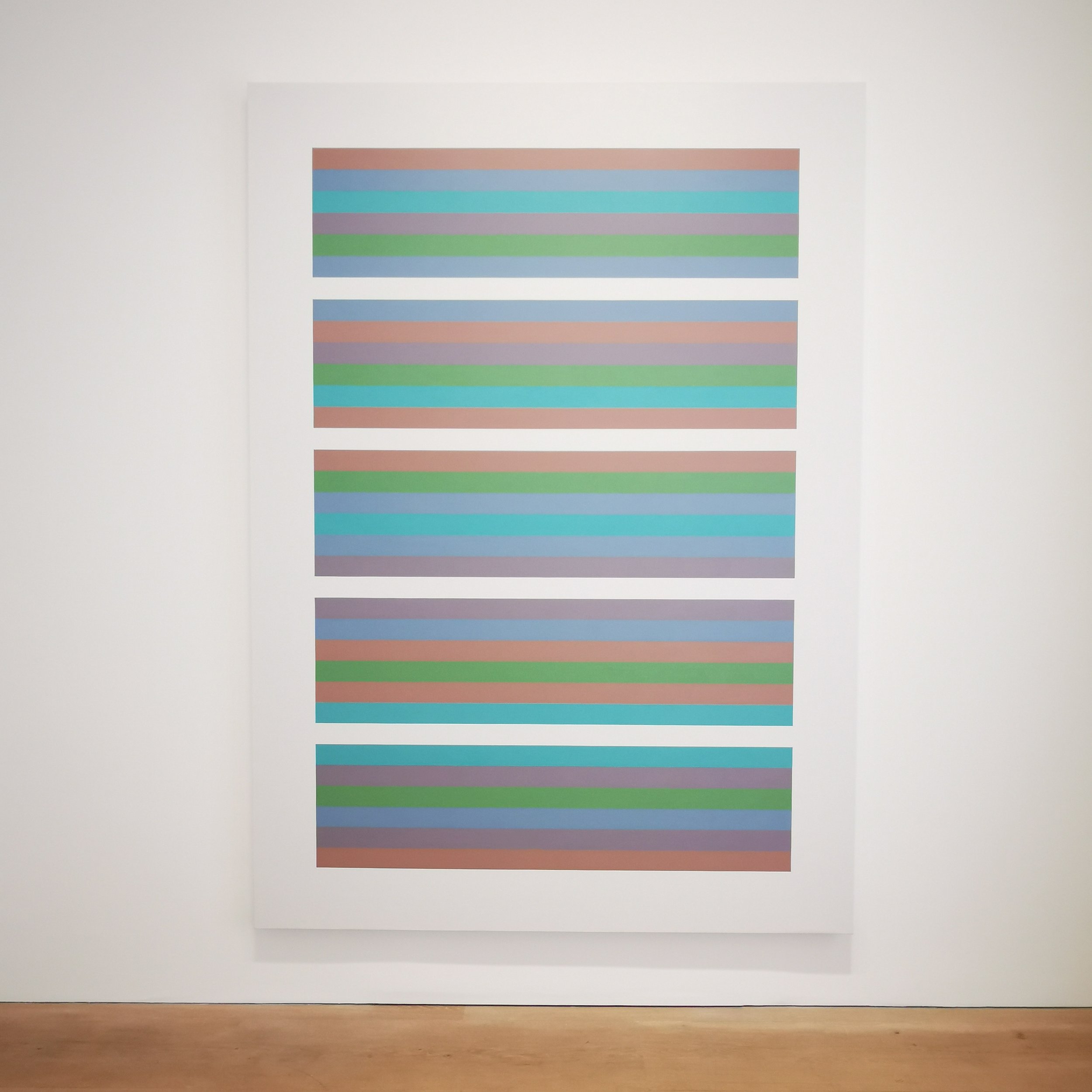It Sometimes Makes Your Eyes Go Funny
It is about time some words were dropped here about the enduring contribution made by a true pioneer of 21st century art. The clue here is in the title, we are of course talking about the inimitable Bridget Riley.
The aforementioned title is actually a quote from Martin Freeman, who was interviewed as part of a recent documentary commemorating the artist and her extensive body of work. Bridget Riley: Painting the line first aired in November 2021, and at the time of writing is still available to watch on the BBC iPlayer (for viewers in the UK). This excellent programme sees journalist Kirsty Wark interviewing the artist over the course of an hour while managing to traverse years of a life exemplified by an unconscious endeavour to innovate. The economy of Warks questions, which allow Riley the time and space to respond with considered insight, is really such a pleasure to behold. Even at the age of 90 Riley is possessed of a tack sharp recall of her life, and is still now clearly re-evaluating the path she has taken and the value of each experience in shaping what came next.
Her recollection of time spent in Cornwall during world war II, which underpinned her formative years and served to incubate her creative drive, are of particular value in aiding an understanding of the origins of much of her earlier work. The revelation that each piece seeks to convey an abstracted impression of events found in nature, the sea lapping at the shore, or the breeze playing in the hedgerows, gives enormous credence to her work, helping the viewer contextualise it beyond simply abstraction for the sake of it.
Jane and I have a recurring conversation about art vs artist, and which of these you are actually buying into when you collect a piece. While we may not always share the same level of enthusiasm for an artist and their intent, we both agree that it is largely impossible to separate the two, they are interwoven. It does, however greatly help your appreciation of the work if you have a sense that its creator had a clear vision of what they were trying to achieve, especially if this intent is forged through experience, as this lends authenticity to the work. Couple this with the talent to execute on that vision and you surely have the necessary elements for success, authenticity + ability. Consider the time Riley spent at the Royal College of Art where she recreated a copy of George Seurat’s The Bridge at Courbevoie in order to gain a deeper first hand understanding of his method. This technical endeavour is seemingly typical of the astudious nature Riley applied toward her work, studied and meticulous. Tracey Emin, also interviewed for the documentary, astutely declares that many could probably execute a similar idea to those seen in Riley’s work, but just try making a career out of it, try focusing so intently on a single concept and evolving it over a lifetime. That level of unwavering commitment to an idea, and the craft involved in gestating it, is what makes Riley such a special artist.
Having visited the Past Into Present exhibition at the David Zwirner gallery in London in June of 2021, I left with a renewed appreciation of this service to craft in which Riley places herself. While not to everyone’s taste (but then what is), art should not exist simply to be compliant and ‘pretty’, it should live unapologetically, inhabiting the space made for it by its creator regardless of the reactions it may receive from its fickle viewership. Indeed, the point was made during Painting the line, that Riley’s work found very little support throughout the early part of her career. It seems then that society just needed to catch up while Riley quietly and brilliantly went about her work, the very definition of a visionary.

